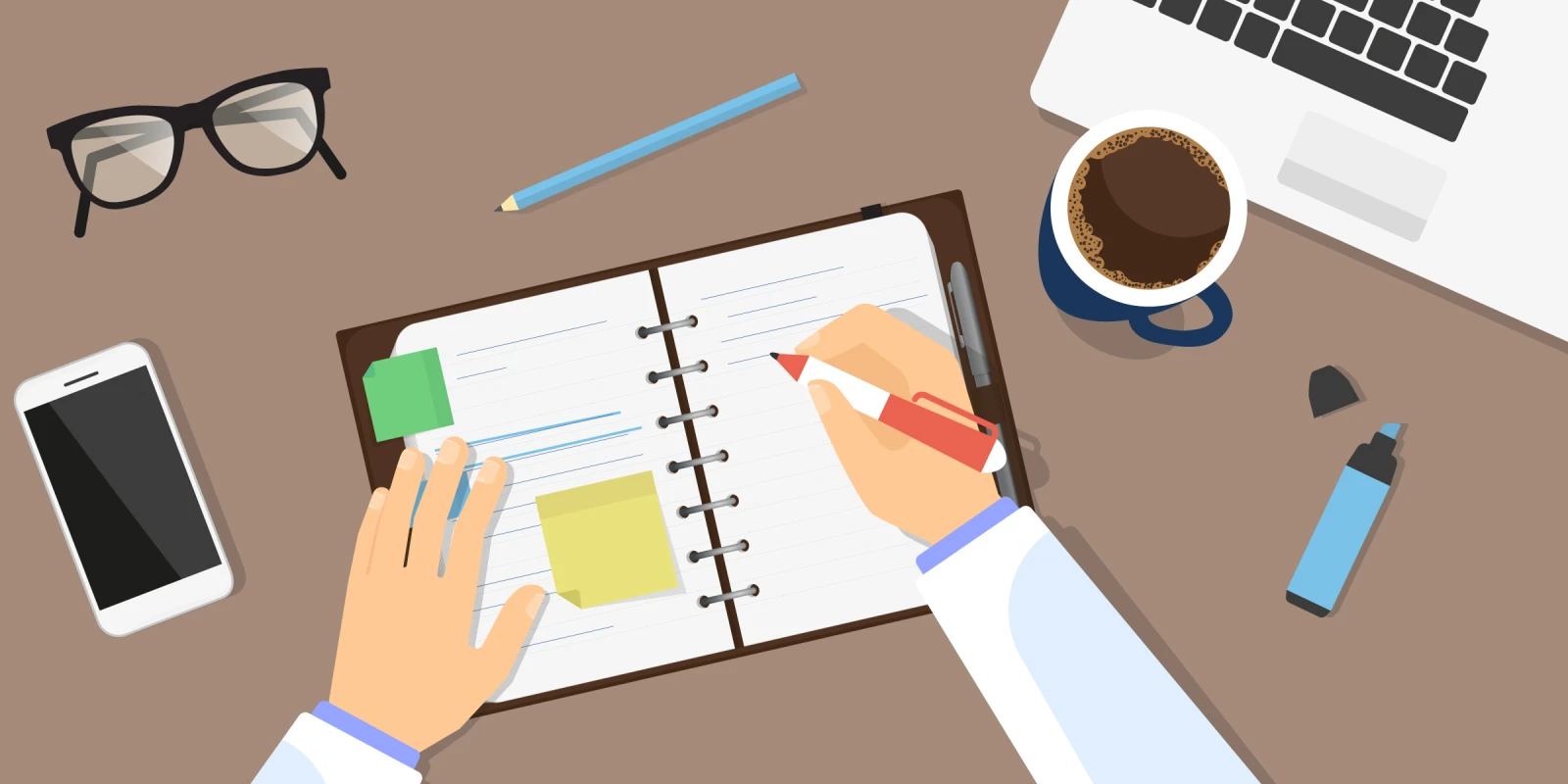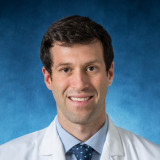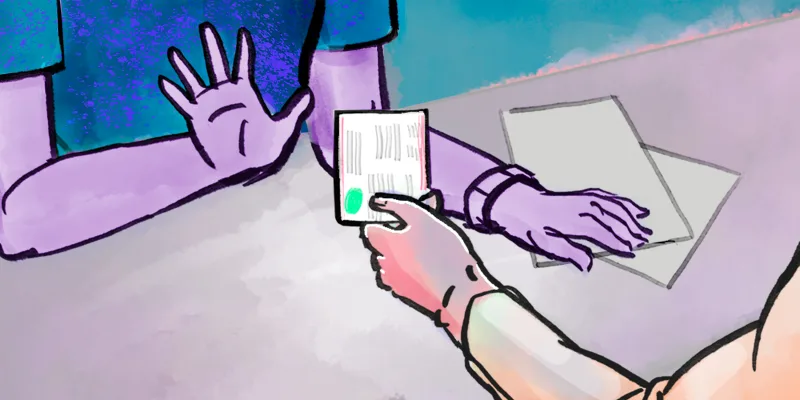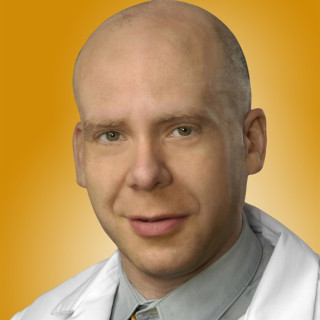Do you remember the first patient you ever interviewed? That feeling of knocking on the door and then catching your breath as you walk in and see a person lying in a hospital gown waiting for you. For me it was a few months into my first year of medical school. I had just finished struggling my way through first-year anatomy when my first patient interview was scheduled. That afternoon I buttoned up my starchy, hip length white coat, draped my Littman Cardiology III awkwardly around my neck, and knocked on the door. As I walked in, an elderly man looked up at me with weary, yellowed eyes. His abdomen protruded out painfully, and his head was propped up by several pillows. He motioned for me to sit down, so I pulled up a chair, took out a notepad, and listened to what he had to say. I was too inexperienced to connect his appearance and winded speech with the hardened liver and failing heart that were taking his life. But when he told me he was waiting to be transferred to hospice – “a place to rest,” as he called it – I understood the gravity of his condition. I did my best to bear witness to his story, jotting down notes as he described his life.
Reflecting on that first interview – and all the clinical experiences I’ve had since that day – I’m struck by its simplicity. I was a naive first-year medical student with nothing to offer a patient by way of knowledge or experience, but he got to tell his story and I got to listen to it. There were no computers between us, no EMR (these were pre-EPIC days at my medical school) – just two people sitting together in a hospital room. And that’s how medical school was for me. Unencumbered by the need to write notes or put in orders, most of my patient interactions were simple and rewarding – eliciting a history, doing an exam, jotting down notes, and reporting what I’d found. And then I became a doctor.
The first two months of my intern year were spent in the ICU, caring for very sick patients. I had eight to 10 progress notes to write every morning, endless admissions and transfers, countless orders to put in, and innumberable labs to check. I spent some time running around trying to put in lines or do arterial sticks, calling families, speaking with consultants – but mostly I was behind the computer, documenting everything and anxiously looking at labs and vitals. From the ICU, I went to the ER where I was met with a similar pace. I did more procedures and physical exams, but still spent most of my time staring at the computer screen. I learned to type my notes while interviewing a patient – trying to make eye contact – but mostly trying to stay afloat so I could go home after a 12-hour shift with fewer than 10 notes to finish. Inpatient floor work was much the same: I was inseparable from a computer.
As I moved along in my training, shifting primarily to outpatient work, I experimented a bit with separating myself from the computer – but with high volume outpatient clinics, I found I needed to write my notes in real time to keep up with the pace. And so, I settled into a rhythm of always typing while my patients were talking – intermittently scanning the record for relevant data. I tried to pause when appropriate, trying to maintain that connection I knew was so important, but efficiency was always in the back of my mind. I asked questions, patients answered, and I typed away into my templates. And the count of unfinished notes in my mailbox stayed at zero.
Then a few months ago I was tossed a curve ball. For one of my final rotations in fellowship, I was assigned a new clinic room to conduct my interviews in. I didn’t think anything of it until the first day I had a patient in the new room. I sat down with the patient and their family to take the initial history and realized there was no way for me to face the computer without my back being turned completely to the patient. The computer was bolted to the wall opposite where the patient was sitting and there was no way to re-orient things so that I could type and even vaguely gaze in the direction of the patient and their family. Flustered, I pulled some paper out of the printer in the room, found a pen buried in a pocket of my white coat, and started jotting down the history.
At first, it felt a bit awkward. Without my computer I felt vulnerable – I couldn’t glance through prior notes while the patient spoke or look up labs and imaging results. But as the interview continued, I loosened up. I had read about the patient beforehand so knew enough background to guide my questions and exam. A rhythm developed – my questions felt natural, I caught pauses and nuances in the history that I might otherwise have missed. The interview took on a natural cadence and my questions followed less of a pre-ordained template and felt more organic. We finished the intake interview about 10 minutes earlier than usual, which gave me time to dictate into a note before the next patient. The next interview went the same way – it felt like a barrier had been lifted between me and my patients. I was able to pay closer attention to speech patterns and nuanced movements during the interview (important aspects in my specialty of psychiatry). But more importantly, the human connection felt more sincere – once again we were two people sitting together and talking, trying to understand a clinical problem together. Without the computer I felt my love of medicine reinvigorated.
Research on the optimal mix of patient and computer interaction is less than definitive. A recent study suggests that patients may participate less actively in medical encounters when physicians are more engaged with a computer (more keyboard and mouse activity). Another study suggests that patients prefer intermittent typing to handwriting or continuous typing. Ultimately, I think every physician must find their own style – a way to balance efficiency with patient connection. But regardless of style, it is clear to me that excessive computer time saps the joy from medicine and probably leads to suboptimal care.
I’ve stopped typing during my patient interviews since switching clinic rooms, and I’ve never looked back. I’m able to dictate faster than I type and finish my notes in about the same amount of time. And I think I’m conducting more skillful interviews, certainly more enjoyable ones. Medicine is a hard profession – from insurance issues to billing, RVUs to litigation – and there are many distractions from the joy of caring for patients. For me, decreasing time on the computer has reminded me why I went into medicine – to sit with patients and bear witness to their stories, treat their suffering, and offer hope and guidance in difficult situations. And I don’t need a computer for that.
Do you use the EMR or handwritten notes? Why? Share in the comments.
Chris Morrow is a geriatric psychiatry fellow at the Johns Hopkins School of Medicine. He completed his general psychiatry residency training at Johns Hopkins and served as a chief resident during his final year. His clinical and research interests include the psychiatric care of patients with neurodegenerative disease, psychiatric care in patients with complex medical illness, psycho-oncology, and collaborative care. He is a 2021–2022 Doximity Op-Med Fellow.
Image by Julia Tim / Shutterstock






